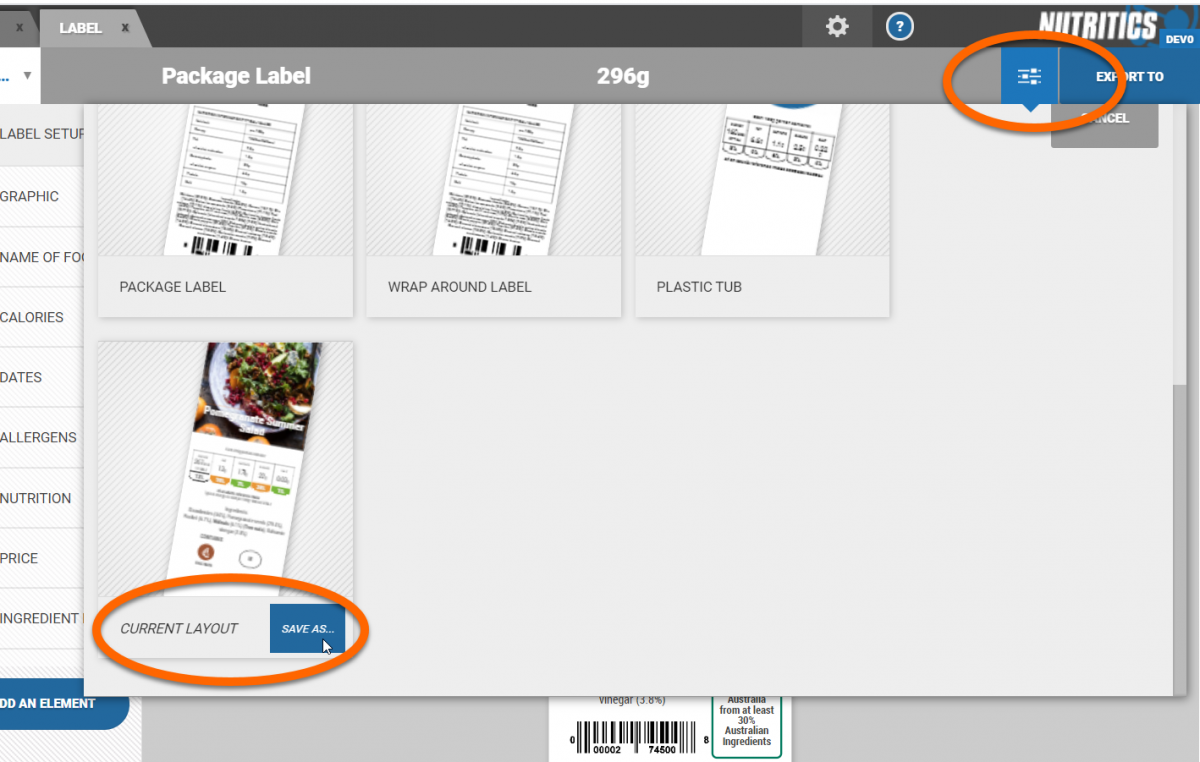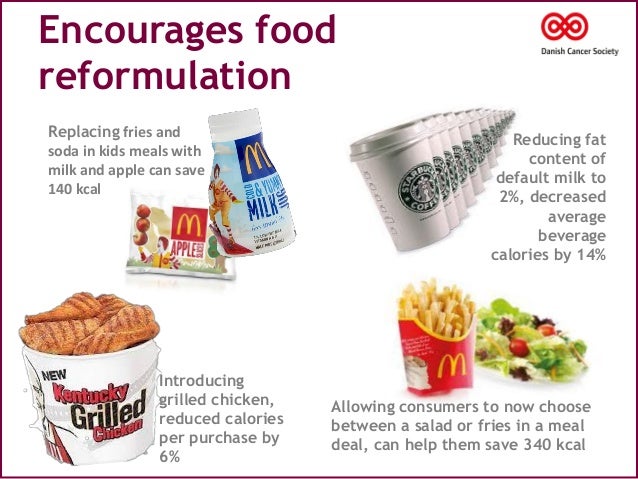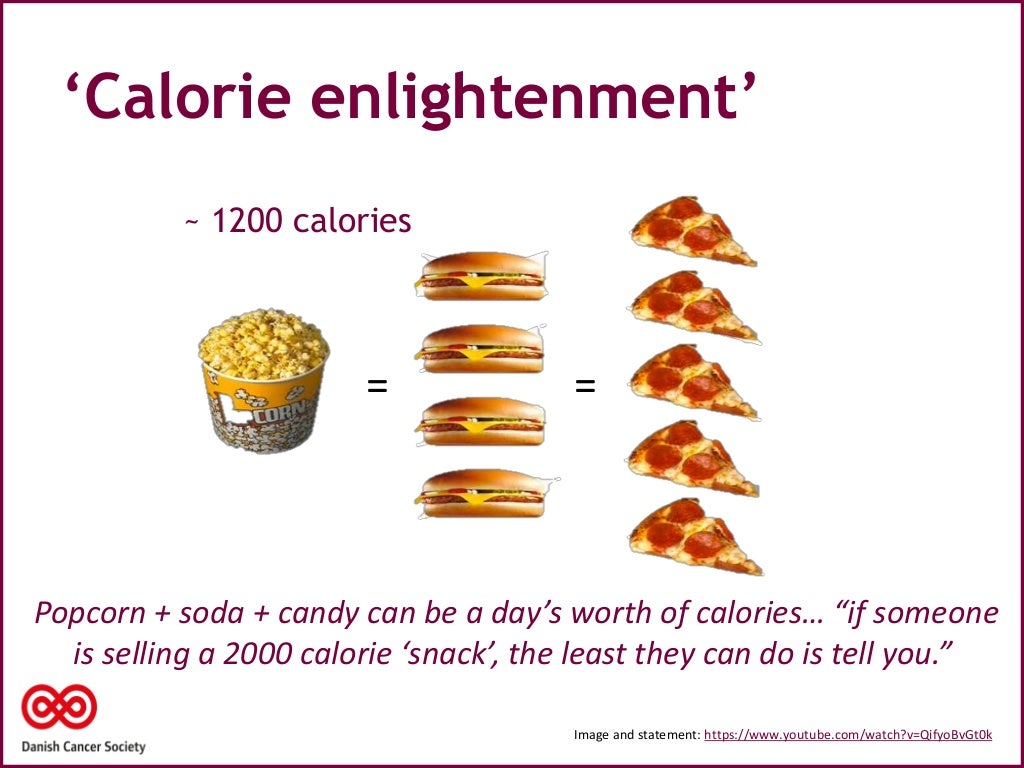45 analyze food labels for energy content
How to understand food labels - Eat For Health The Nutrition Information Panel on a food label offers the simplest and easiest way to choose foods with less saturated fat, salt (sodium), added sugars and kilojoules, and more fibre. It can also be used to decide how large one serve of a food group choice or discretionary food would be and whether it's worth the kilojoules. Labelling-Determination of the energy content of food Currently used polyols include sorbitol and erythritol. Carbohydrates give average gross energy values of 4.2 kcal or 17.6 kJ per gram, fat gives 9.4 kcal, or 39.4 kJ per gram and protein gives 5.65 kcal or 23.7 kJ per gram. The conversion factors for joules and calories are: 1 kJ = 0.239 kcal; and 1 kcal = 4.184 kJ.
PDF Food Labeling Guide - Food and Drug Administration Office of Nutrition, Labeling, and Dietary Supplements HFS-800 Center for Food Safety and Applied Nutrition Food and Drug Administration 5100 Paint Branch Parkway College Park, MD 20740 (Tel)...

Analyze food labels for energy content
Understanding food labels: portions, energy - Health24 When next you look at a food label that says 'low in energy', first check the label to see how much energy it really contains. That energy bar we were discussing earlier may contain as much as 500kJ per 50g portion (which means it contains 1000kJ per 100g). Therefore, it is anything but 'low in energy'. Energy content of slimming products Investigate the energy content of food - BBC Bitesize A simple investigation can be conducted to investigate the energy content of a food sample. Procedure. Add water - around 20cm 3 - to a boiling tube clamped in a retort stand. How to Read Food Labels Without Being Tricked - Healthline Still, processed foods that are labeled low-carb are usually still processed junk foods, similar to processed low-fat foods. Made with whole grains. The product may contain very little whole ...
Analyze food labels for energy content. How To Read Food and Beverage Labels - National Institute on Aging Although frozen and canned fruits and vegetables have food labels, fresh varieties often do not. You can find nutrition information for fresh vegetables and fruits on the USDA website. Or you can call the U.S. Department of Agriculture's Food and Nutrition Information Center at 301-504-5414. Understanding percent Daily Value (% DV) How to Calculate Energy From Foods - LIVESTRONG.COM Step 1 Multiply grams of carbohydrate in the food by 4 calories per gram. A calorie is a unit of how much energy is in a given amount of food, also called a kcal. Regardless of whether the carbohydrate in food is sugar or starch, all carbohydrates provide the body with 4 calories/gram, explains Dr. Lauralee Sherwood in her book "Human Physiology." PDF Energy Content of Foods Your Name Lab Partners: Period: January 28, 2013 The data showed that high fat foods have more energy than high sugar foods which was expected. The food with the highest energy content per gram was the peanut at 6186.4 J/g. The food with the lowest energy content per gram was the marshmallow at 362.3 J/g. This Energy labelling of alcoholic beverages - Food Standards In December 2021, FSANZ completed a preliminary analysis of regulatory and non-regulatory options for energy labelling of packaged alcoholic beverages to identify a preferred approach. This included targeted consultation with industry, public health, consumer and jurisdictional stakeholders. The key outcomes were:
How Do You Know Your Food's Nutrition Facts Label Is Accurate? The short answer. Manufacturers often confirm their nutrition numbers by matching their products as closely as possible to NIST's food reference materials, which contain precisely measured quantities of nutrients. NIST's measurements are accurate to within 2% to 5% for nutrient elements (such as sodium, calcium and potassium ... Investigating the Energy Content of Foods - Vernier Food supplies energy for all animals—without it we could not live. The quantity of energy stored in food is of great interest to humans. The energy your body needs for running, talking, and thinking comes from the foods you eat. Not all foods contain the same amount of energy, nor are all foods equally nutritious for you. An average person should consume a minimum of 2,000 kilocalories per ... Reading Food Labels (for Parents) - Nemours KidsHealth Almost all foods have small amounts of sodium, but many processed foods are high in sodium. Total Carbohydrate Carbohydrates are an important source of energy. The food label gives total carbohydrates along with fiber, total sugars, and added sugars. Dietary Fiber Dietary fiber itself has no calories and is a necessary part of a healthy diet. Nutrition labelling | Food Standards Agency When providing nutrition information, you are required to declare: energy value. amounts of fat, saturates, carbohydrate, sugars, protein and salt. The content of the mandatory nutrition declaration can be supplemented with an indication of the amounts of one or more of the following: monounsaturates. polyunsaturates.
Energy Content of Food Lab Report Answers - SchoolWorkHelper Takedown all the readings. Repeat steps 1 to 12 for 3 times for each different type of chip. Find the average initial temperature, final temperature, and mass of the food sample. Use the formula, Energy = Volume of water x (initial-final temperature) x 4.2/ mass of food sample. For each different type of chips READ: PDF Calorimetry: Measuring the Energy in Foods - Carolina.com 5. Calculate the energy content of the food in kilocalories/gram. 1.65 kcal/1.5 g = 1.1 kcal/g 6. Using information on the nutrition label of the food sample, calculate the food manufacturer's kilocalories/gram. (Divide calories per serving by the number of grams in a serving.) 90 Cal/ 38 g = 2.37 kilocal/gram 7. Kami Export - CHEM21_CO_01_Analyze_Data_Explore_IWS (1).pdf - NAME DATE ... Our bodies need energy and this energy would be the nutrients that are in foods like carbs, fats, and proteins, etc. We gain energy by consuming it and the body taking the nutrients from the food. 3. SEP Evaluating Claims Marian claims that Food A has slightly more than three times the Calories as Food B. Johan claims that Food B has more Calories. Analyze_Data_Explore_Per 2.docx - NAME DATE CLASS ANALYZING... The label provides useful information for identifying the energy content of food, the source of that energy, and other nutritional information. The figure shows two sample food labels. Notice that the largest font on the labels is used to show Calories, with a capital C.
The Importance of Reading the Food Label and Nutritional Facts The label changes now require that vitamin D, potassium, iron and calcium content be included here, along with the percent daily values for each. You should aim for high levels of these nutrients. Vitamins A and C are no longer required, but they are still important to our diets. 6. Ingredient List Finally, there's the ingredient list.
The Basics of the Nutrition Facts Label Step 4: Check Out the Nutrition Terms. Low calorie: 40 calories or less per serving. Low cholesterol: 20 milligrams or less and 2 grams or less of saturated fat per serving. Reduced: At least 25% less of the specified nutrient or calories than the usual product. Good source of: Provides at least 10 to 19% of the Daily Value of a particular ...
The Science Behind Calories and Nutrition Facts Labels The calorie number we see on food labels refers to a kilocalorie (kcal), which is also known as a large calorie or a food calorie. A kilocalorie is 1 000 calories. One kilocalorie is the amount of energy it takes to heat one kilogram of water one degree Celsius at sea level.
Food Labels | Nutrition.gov What's New with the Nutrition Facts Label. HHS, Food and Drug Administration. The U.S. Food and Drug Administration (FDA) has updated the Nutrition Facts label on packaged foods and beverages with a fresh design that will make it easier for you to make informed food choices that contribute to lifelong healthy eating habits. What's in a Name?
PDF Better Nutrition by Analyzing Food Labels - Dartmouth Lynda R. Wiest College of Education University of Nevada, Reno October 2002 Better Nutrition by Analyzing Food Labels Suggested Grade Levels: 7 and up Possible Subject Area(s): Health; Consumer Education Math Skills: calculating percents; writing formulas; reading, interpreting, and graphing data Overview: Students will learn how to interpret food labels and analyze the nutritional
Food labels & nutritional information | Raising Children Network Fats, protein and carbohydrates all provide your body with the energy or kilojoules you need to function and do your daily activities. When comparing similar foods, lower energy usually means lower fat or sugar, which means that the food is a better choice for most people. Fat, sugar and salt
How to Understand and Use the Nutrition Facts Label | FDA Dietary fiber, vitamin D, calcium, iron ad potassium are nutrients on the label that Americans generally do not get the recommended amount of. They are identified as nutrients to get more of....
How is the caloric value of food determined? - McGill University A food calorie is actually a "kilocalorie.". In other words it is the amount of energy needed to raise the temperature of one liter of water by one degree. Originally, the calorie content of a food was measured in a calorimeter. A known amount of food, which has had its water content evaporated, was placed in a container surrounded by a ...
Chapter 3: Calculation of The Energy Content of Foods - Energy ... determining the energy content of foods depends on the following: 1) the components of food that provide energy (protein, fat, carbohydrate, alcohol, polyols, organic acids and novel compounds) should be determined by appropriate analytical methods; 2) the quantity of each individual component must be converted to food energy using a generally …
How to Determine the Nutritional Value of Food - FoodCrumbles The energy content of a food is given in kcal (often referred to as Calories) and/or kJ (kilojoule). Converting from kcal to kJ is a simple set calculation 1 kcal = 4,18 kJ Set conversion values Research has shown how much energy our body can make from these macronutrients. We know that: 1 gram of fats provides 9 kcal of energy
How to Read Food Labels Without Being Tricked - Healthline Still, processed foods that are labeled low-carb are usually still processed junk foods, similar to processed low-fat foods. Made with whole grains. The product may contain very little whole ...
Investigate the energy content of food - BBC Bitesize A simple investigation can be conducted to investigate the energy content of a food sample. Procedure. Add water - around 20cm 3 - to a boiling tube clamped in a retort stand.
Understanding food labels: portions, energy - Health24 When next you look at a food label that says 'low in energy', first check the label to see how much energy it really contains. That energy bar we were discussing earlier may contain as much as 500kJ per 50g portion (which means it contains 1000kJ per 100g). Therefore, it is anything but 'low in energy'. Energy content of slimming products














Post a Comment for "45 analyze food labels for energy content"